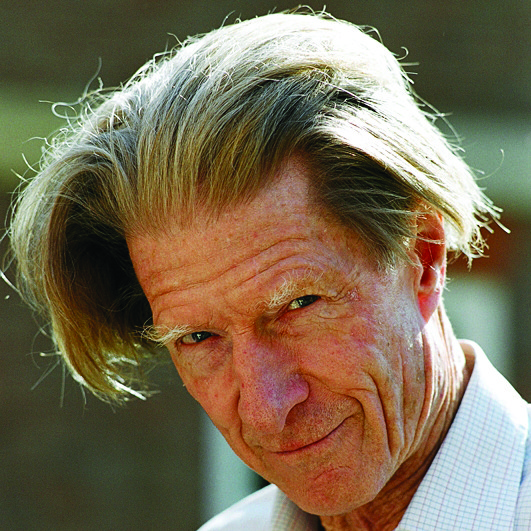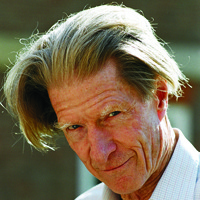Stem cells, quantum physics and fight or flight: The Nobel winners 2012
20 Oct 2012 by Evoluted New Media
The most prestigious and publicised awards in the science world were announced last month. Stem cell research, ground-breaking quantum methods and the mechanism behind one of the most important group of receptors in the human body were among the topics of the winners’ research of this year’s Nobel Prizes.
Physiology and Medicine
First up, the Physiology and Medicine prize went jointly to John B. Gurdon and Shinya Yamanaka for the discoveries, conducted 40 years apart, that mature cells can be reprogrammed to become pluripotent stem cells. This means that mature, specialised cells can become embryo-like cells, capable of developing into all tissues in the body. Their findings have revolutionised our understanding of how cells and organisms develop.
Professor Sir John B Gurdon (pictured), Emeritus Professor in Cell Biology at Cambridge University’s Gurdon Institute discovered in 1962 that the specialisation of cells is reversible. He replaced the immature cell nucleus in egg cells of a frog with the nucleus from a mature intestinal cell. This modified egg cell developed into a normal tadpole.
It is easy to assume that a Nobel Prize winner must have been a success from birth, but it has been widely reported that Oxford-educated Gurdon once received a disastrous school report, advising him not to continue with science. The report, which Gurdon keeps framed in his office in Cambridge, reads: “I believe he has ideas about becoming a scientist. This is quite ridiculous; it would be a sheer waste of time, both on his part, and of those who have to teach him.’
Gurdon told Laboratory News that hearing he’d won a Nobel Prize was “very pleasing but most surprising.” When asked if he’d enjoyed other successes in the laboratory since his prized discovery, he said: “I like to think I’ve been productively employed. I’ve focused on underpinning the mechanism by which transplanted nucleuses can result in multi-potent cells.”
Gurdon shares the prize with Shinya Yamanka in Japan who discovered in 2006 how intact mature cells in mice could be reprogrammed to become immature stem cells. By introducing just a few genes, he was able to reprogram mature cells to ones that were able to develop into all types of cells in the body (induced pluripotent stem cells).
Both discoveries provided new tools for scientists around the world and led to remarkable progress in many areas of medicine.
Physics
A day later, the Physics Prize was announced. Dubbed an award for ‘being in the same place at once’, it went to Serge Haroche from France and David J Wineland from the USA for inventing and developing methods for measuring and manipulating particles while preserving their quantum-mechanical nature, in ways that were previously unattainable outside thought-experiments.
Single particles lose their quantum properties as soon as they interact with the outside world and therefore this bizarre sounding phenomenon could not be directly observed. However, using methods to allow them to examine, control and count the particles, Haroche’s and Wineland’s research groups were able to measure and control very fragile quantum states.
Wineland traps electrically charged particles by surrounding them with electric fields. Lasers are then used to suppress the ion’s thermal position, reducing it to its lowest energy state. Finally, a laser pulse places the ion in a superposition state meaning it exists simultaneously in two distinct states.
Wineland has described his experiment as making "a nano-version of a marble rolling back and forth in a bowl and being on the right side and the left side simultaneously."
Meanwhile, Haroche and his research group use the world’s most reflective mirrors to bounce light particles (photons) back and forth inside a small cavity at almost a tenth of a second. The photon will travel 40,000km – equivalent to the circumference of the Earth.
These methods have enabled the first steps towards building a new type of superfast computer based on quantum physics.
Chemistry
Finally, the Chemistry Prize was awarded to Americans Robert Lefkowitz and Brian Kobilka for revealing the inner workings of an important family of cell receptors: G-protein-coupled receptors (GPCRs) which are the targets for roughly half of all drugs.
“Receptors work as a gateway to the cell. As a result they are crucial; regulating almost every known physiological process with humans," said Lefkowitz.
Lefkowitz used radioactivity in 1968 to trace cells’ receptors. He attached an iodine isotope to various hormones and managed to unveil several receptors, one of which was modulated by adrenaline (the ?-adrenergic receptor).
In the 1980s, Kobilka joined Lefkowitz’ research team to isolate the gene that codes for the B-adrenergic receptor. When the gene was analysed, the researchers realised that they receptor was similar to one in the eye that captures light. They thus realised that there is a whole family of receptors that look alike and function in the same manner. Today, this family is referred to as GPCRs.
In 2011, Kobilka managed to capture an image of the B-adrenergic receptor at the exact moment that it is activated by a hormone and sends a signal into the cell. He said: " We have a crystal structure of the receptor activating the G protein. It's caught in the act of signalling across the membrane."






